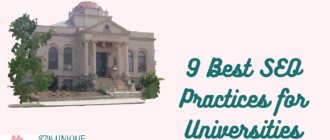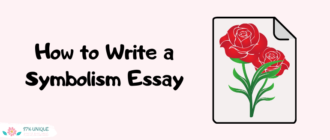Have you ever tried to include information from a source in a research paper, but struggled with avoiding plagiarism? After reading this article, you’ll never have this problem again!
I’ve both written and graded a TON of research papers in my career as a teacher, so I know all of the tricks! Plagiarism never gets past me (I know a Wikipedia article when I see one!), so I know exactly what to do to avoid it.
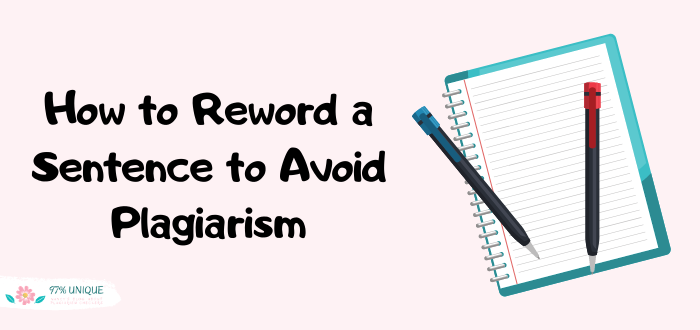
According to one survey, 59% of high school students admitted to plagiarizing within the last year. This is a huge problem!
With so many students admitting to plagiarism, it’s important for us as teachers to know how to help them avoid it by learning and passing on advice for paraphrasing instead of plagiarizing. Plus, if you know these tips, you’ll be better at spotting plagiarism in student papers!
While writing this article, I consulted a variety of online writing labs and forums from universities, libraries, and other great sources for writing advice. After combing through over 50 articles and forums from authoritative sources, I’m confident that I have the best advice for rewording sentences to avoid plagiarism!
The Problem of Plagiarism
According to college professors and administrators, plagiarism has been on the rise over the last decade. This most likely has to do with the ever-increasing abundance of sources available on the internet.

When you can get your paper done with a simple copy and paste, the temptation to plagiarize can be irresistible. Plus, many students are overwhelmed by the amount of information online and don’t know how to take their research and make it their own. Check out this article to learn some great tips for detecting plagiarism in student papers.
It’s up to teachers to make sure students feel confident in their own abilities so they aren’t tempted to plagiarize by teaching the art of paraphrase!
What Is Paraphrasing?
Paraphrasing can be defined as taking information from a source and putting it into your own words. This is an alternative to quoting, so it helps you avoid using too many direct quotations in your paper.
This video will tell you more about the art of paraphrasing!
How to rewrite a sentence without plagiarism? The idea is to write something that maintains the meaning of the original source but using different vocabulary and structure. A paraphrased text will use more generic words instead of copying the same specific vocabulary that the original author used.
There are lots of great resources and videos out there that can help you learn to paraphrase like a pro!
Check out this video to learn how to paraphrase in 5 easy steps!
Your students might be surprised to learn just how simple it is to paraphrase a text to avoid plagiarism!
If you’re really worried about plagiarism, you can use plagiarism checkers that will detect copied information for you. Learn more about one of these checkers, Plagscan, here!
The Difference Between Paraphrasing and Plagiarism
The difference between paraphrasing and plagiarism is simple: a paraphrase takes the meaning of the original source and incorporates it into your own argument, while plagiarism merely copies exactly what the original author said. The important thing is to weave the information into your own argument.
Try looking at examples of text that has been paraphrased well to learn more about the difference between paraphrasing and plagiarism.
Can I Paraphrase Someone Else’s Quotes?
Paraphrasing a quote that you found in your research can be tricky, but there are some important tips to keep in mind to make sure that you do it without plagiarizing!
The most important thing to remember is that you need to change the words and structure for it to be considered a paraphrase. Compare your paraphrase to the original quote and make sure there aren’t too many words or phrases in common.

It’s also important to cite the original source in your text. If you tell the reader where the original quote came from, you should have no problem!
How to Reword a Sentence to Avoid Plagiarism?
Is rewording plagiarism? There are lots of ways to avoid plagiarism. Let’s take a look at several techniques that I came across in my research.
1. Summarize
Instead of paraphrasing an individual sentence, try using summaries of your sources to share information that the author wrote.

For example, you might say, “According to Chris Lewis and Pippa Malmgren (2020), most leaders of the past few decades have been guilty of the same mistake: trading long-term success for short-term wins.”
This gives the main idea of the text without focusing on any specific sentences or data from the text that could be considered plagiarism.
2. Put Away Your Source Text
It isn’t always easy to get the author’s words out of your head when citing source material! One way to learn how to reword a sentence to avoid plagiarism and get rid of this problem is to put away the source text for a day.

Then, paraphrase the text based on what you remember. This will give you some time and distance from the original text, making it easier for you to use your own words.
For example, if I wanted to paraphrase the book I read last week, I might say the following: “William Arruda (2019) tells us that personal branding is just as important as ever in the technology age, even if the tools that we use to create our brands are quite different than they used to be.”
3. Use Synonyms
Using different words can help you make your text distinct from the author’s. It’s quite easy to reword to avoid plagiarism. However, keep in mind that you’ll still need to rework the sentence structure! Simply using a thesaurus on several words isn’t enough to avoid plagiarism.
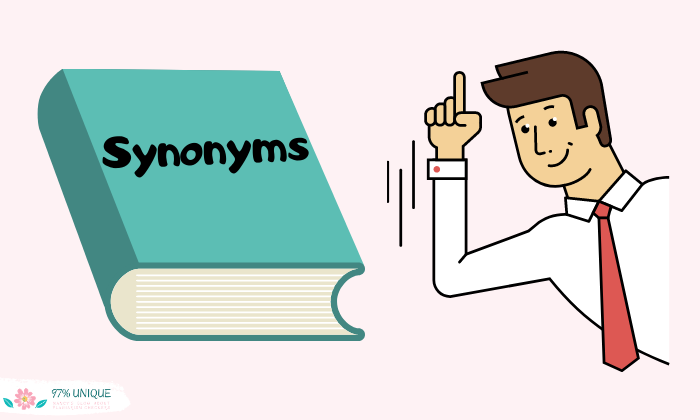
Example: The original sentence might say: “We’re in the midst of a true leadership crisis.”
I can use synonyms to make it say: “We are currently at the heart of a major problem: a genuine catastrophe in how we manage our direct reports.”
By changing a lot of the most important words, my new sentence sounds very different!
4. Change Word Forms
Another way to make your words sound different and show how to rewrite a sentence without plagiarism is by using new word forms.
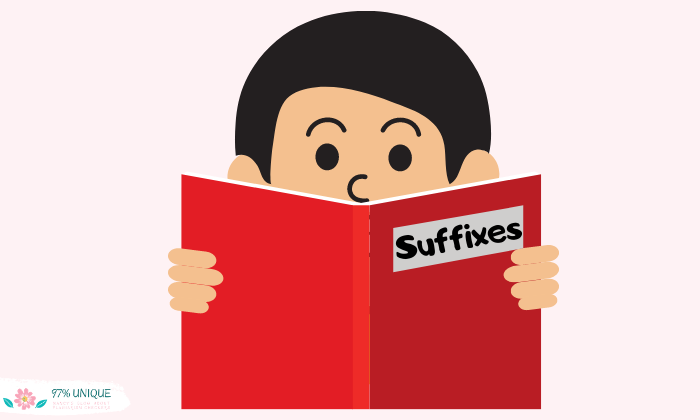
For example, “Sometimes we overlook our own strengths” becomes “Often, you may find yourself overlooking the things that you make you a strong employee.”
This simple change in the form of the words significantly alters the original quote.
5. Change the Sentence Structure
Often, you may find it difficult to paraphrase without using the words that the original author used. You can still tweak the sentence by changing the sentence structure.

For example:
Original: “Increasing diversity without increasing inclusion is a recipe for failure.”
Paraphrase: “You will be most likely to succeed if you increase inclusion as well as diversity.”
Here, many of the words are the same, but the new sentence structure makes it feel very different to the reader!
6. Change the Form of Statistics
The nice thing about numbers is that there’s always a different way to state them! Changing the form in which you present numbers is a great way to avoid plagiarizing the source text.

For example, the author might say that “A study by The Center for Academic Integrity found that almost 80% of college students admit to cheating at least once.”
You can instead say that “The Center for Academic integrity found that 4 out of every 5 college students admit that they have cheated on at least one occasion.”
These sentences present the same data but read in very different ways. Just be careful to make sure that you are presenting the data accurately.
Useful Resources
- How to paraphrase a poem
- 6 consequences of plagiarism
- How to write an essay
- 26 outstanding college essay examples
In Conclusion
There are also lots of great tools out there to help you make sure that your students aren’t plagiarizing. Check out this article on Copyscape: a tool that scan the web and looks for duplicate text.
Hopefully, teaching your students the tips and tricks in this article will show them how to rewrite a sentence without plagiarism and help them avoid plagiarism, so they will never ask you again such questions as “Is rewording plagiarism?”. Learning to focus on main ideas to paraphrase and summarize text is important to developing critical thinking skills, so these are skills that are well worth the effort that they take to learn!


